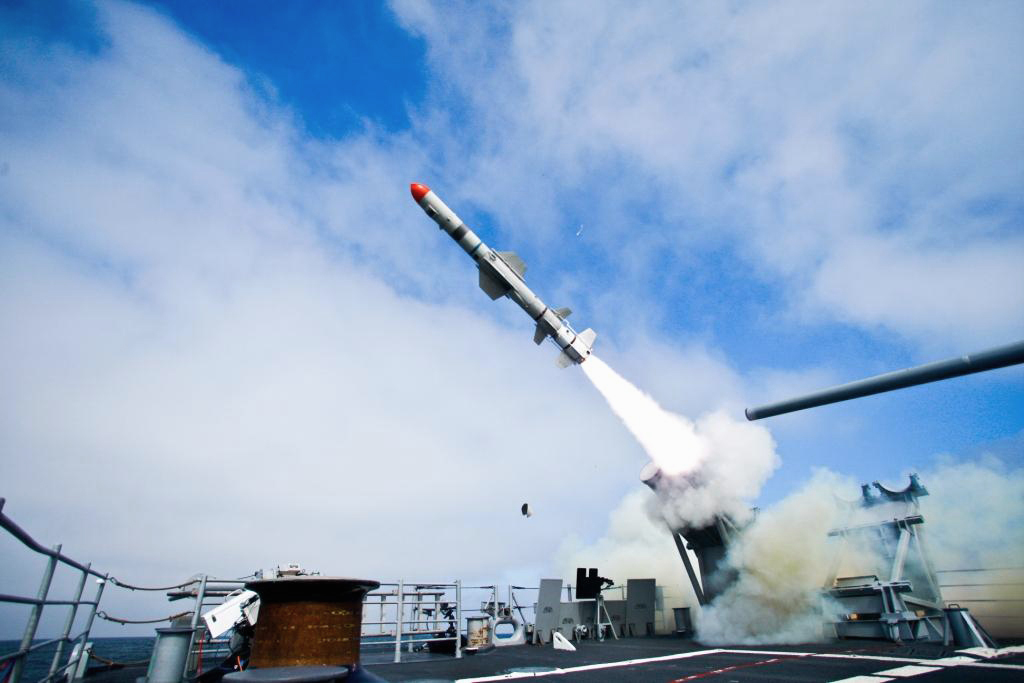


Strong congressional support and oversight will be critical throughout the process. Navy), and the drawdown from inventory (United States and Taiwan) should all be fast-tracked within each organization. The cost estimates (Boeing), the price agreement (Taiwan’s MoD), the paperwork (U.S. Navy and Boeing to all be significantly more efficient and driven than we have seen in almost every case outside Ukraine over the past decade.

If it becomes clear that the existing new construction procurement is delayed past 2026, an additional 64 missiles should be considered.ĭelivering on the necessary timelines would require DSCA, Taiwan’s MoD, the U.S.
TAIWAN HARPOON MISSILE TV
The missiles should come from the several hundred older missiles in the Navy’s inventory that are under consideration for demilitarization or destruction.Ī prime contractor would need to pull these pieces and parts together - much as was done for Ukraine in a few short months - or in the standard episode of any “MacGyver” TV series.Ī short fuse-procurement effort should include the purchase of four of the ground launchers, four of the truck-based launchers, and 64 missiles (each launcher holds four missiles, so eight launchers would need 32 missiles and a reload would require a further 32 missiles). The generators and trucks can come from either country’s inventories. The communications and data link could come from existing Taiwan systems. The launch support structures and Harpoon Ship Command-Launch Control Systems would be drawn from those taken off decommissioned U.S.

If Taiwan wants a more mobile system, it could work with the producer to mount a variant on an existing Heavy Expanded Mobility Tactical Truck instead of the steel plate. inventories of Harpoon missile-launch support structures, Harpoon Ship Command-Launch Control Systems, ground platforms (essentially a steel plate), power generators, and communications systems providing voice and a data link to provide targeting data. This gap filler can be accomplished by building a relocatable ground-launch platform from existing U.S.
TAIWAN HARPOON MISSILE MOD
The Pentagon and Taiwan’s MoD should work with Boeing, the manufacturer of the Harpoon, to design and field this system rapidly - something that can realistically be done by early 2024 and serve as a bridge to the 100 newly fabricated launcher systems requested by Taiwan. The Chinese People's Liberation Army storm ashore from landing crafts in an exercise on the mainland coast close to Taiwan in 1999. While such an effort for Taiwan would need to be conducted on a larger and more sustainable scale, using existing components can expedite delivery of initial capabilities for Taiwan, too. The Pentagon and Taiwan’s Ministry of Defense should start by using a “ MacGyver”-type approach, not unlike the method used to get a Harpoon capability to Ukraine quickly. So what can be done to get the Harpoon systems to Taiwan sooner? In 2021, the People’s Liberation Army “conducted more than 20 naval exercises with an island-capture element, greatly exceeding the 13 observed in 2020,” according to the report. To ensure it could employ these capabilities effectively, Beijing is devoting significant amounts of its maritime training on island-capture scenarios. China boasts the largest navy in the world (approximately 340 ships and submarines) and is “the top ship-producing nation in the world by tonnage,” as the Pentagon’s China military power report notes, and “the is increasing its shipbuilding capacity and capability for all naval classes: submarines, warships, and auxiliary and amphibious ships.”


 0 kommentar(er)
0 kommentar(er)
